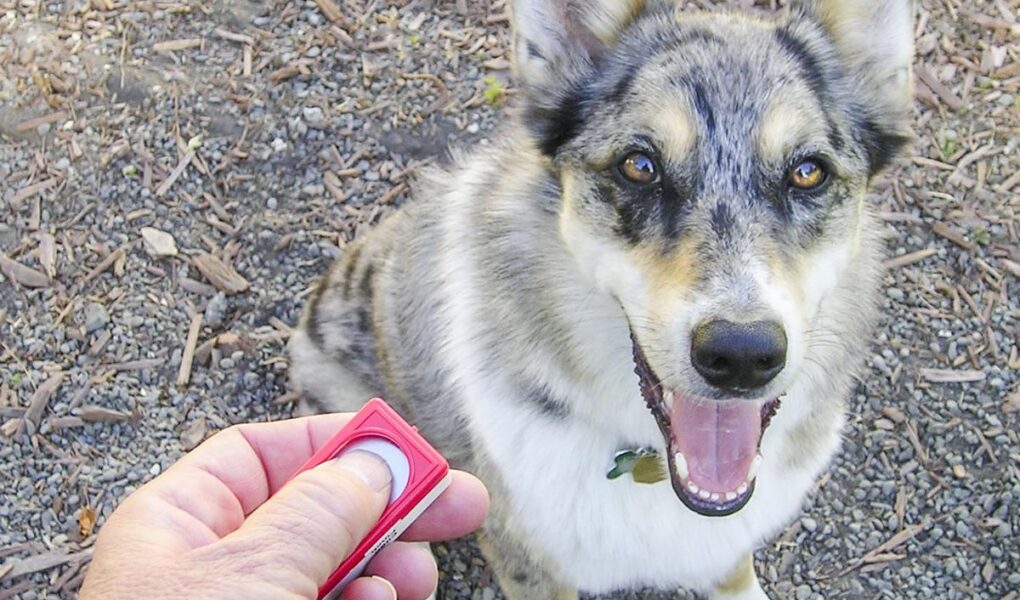Unlocking Communication: The Art of Clicker Training
In a world where effective communication is key to building connections, the realm of animal training offers a unique lens through which we can explore interaction, understanding, and trust. Enter clicker training: a method that transcends mere obedience, fostering a deep bond between the trainer and their animal companion. This innovative technique harnesses the power of positive reinforcement, using a simple sound to signify success and encourage desired behaviors. Whether you’re training a spirited puppy, an inquisitive cat, or even a parrot, clicker training not only enhances learning but also transforms the training experience into a harmonious dialogue. Join us as we delve into the principles, applications, and benefits of clicker training, and discover how this engaging approach can unlock new levels of communication between humans and animals alike.
Table of Contents
- Understanding the Principles of Clicker Training
- Building a Strong Foundation: The Basics of Clicker Techniques
- Common Challenges and Solutions in Clicker Training
- Enhancing Your Training Sessions: Tips for Success
- Q&A
- To Conclude
Understanding the Principles of Clicker Training
Clicker training is built upon a few fundamental principles that harness the power of positive reinforcement and clear communication. At its core, this method utilizes a distinct sound—a clicker—that marks a desired behavior. When an animal performs the intended action and immediately hears the click, it associates the sound with a reward, typically food, praise, or play. This process not only motivates the animal to repeat the behavior but also alleviates confusion, making learning more efficient. Key aspects include:
- Timing: The click must occur at the precise moment the desired behavior is exhibited to create a strong connection.
- Consistency: Using the clicker consistently across training sessions helps reinforce the behavior.
- Gradual shaping: Breaking down complex behaviors into smaller, manageable steps makes learning less daunting.
Another essential aspect of clicker training is the concept of shaping. Trainers use this technique to gradually mold behavior, rewarding small increments of improvement. For example, if teaching a dog to roll over, you might first reward the dog for simply lying down, then for turning its head, and finally for completing the roll. This incremental approach not only builds confidence but also fosters a positive learning environment. To illustrate how shaping works, consider the following table:
| Step | Behavior | Reward |
|---|---|---|
| 1 | Lies down | Click and treat |
| 2 | Turns head | Click and treat |
| 3 | Rolls over | Click and treat |
Building a Strong Foundation: The Basics of Clicker Techniques
Clicker training is rooted in the principles of positive reinforcement, creating a communication bridge between you and your companion. At its core, this method utilizes a distinctive sound — the click of a device — to signal to your pet that they have performed the desired behavior. This creates a clear and consistent feedback loop, essential for effective learning. To ensure you get started on the right foot, consider these fundamental elements:
- The Clicker: Choose a clicker that fits comfortably in your hand and produces a sound your pet responds to.
- Timing is Key: Click the moment your pet performs the desired behavior to reinforce the action.
- Reward After the Click: Follow up with a treat or praise to reinforce the good behavior.
- Short Sessions: Keep training sessions brief and enjoyable, ideally around 5-10 minutes.
As you embark on your clicker training journey, it’s essential to understand the importance of building a strong foundation. Start with simple commands or behaviors to build your pet’s confidence and their understanding of the click-reward association. Consider creating a training schedule to keep track of your progress and maintain consistency throughout the learning process. Here’s a basic outline of what a first week might look like:
| Day | Focus Behavior | Duration |
|---|---|---|
| 1 | Sit | 5-10 minutes |
| 2 | Stay | 5-10 minutes |
| 3 | Come | 5-10 minutes |
| 4 | Down | 5-10 minutes |
| 5 | Leave It | 5-10 minutes |
Common Challenges and Solutions in Clicker Training
Clicker training is an effective method for teaching new behaviors to pets, but trainers often encounter challenges that can hinder progress. One common issue is inconsistency in timing. If a click is not delivered immediately after the desired behavior, the pet may become confused about what action earned the reward. To address this, ensure you are always ready to click as soon as the behavior occurs, and practice in low-distraction environments before progressing to more stimulating settings. Additionally, some pets may become frustrated if they do not receive rewards consistently. It’s crucial to balance short training sessions with adequate rewards to maintain motivation without overwhelming your pet.
Another challenge is the tendency for pets to lose interest over time. In this case, the training might feel repetitive or monotonous. To combat this, regularly vary the rewards you use; mix treats, praise, and play to keep your pet engaged. You can also introduce new tricks or reinforce previously learned commands to maintain enthusiasm. Setting realistic goals and using gradual steps can help manage expectations and reduce frustration. Here’s a simplified table showcasing potential rewards:
| Reward Type | Example |
|---|---|
| Food Rewards | High-value treats like chicken or cheese |
| Verbal Praise | Excited phrases like “Good job!” |
| Physical Rewards | Petting or gentle scratch behind the ears |
| Playtime | Using favorite toys or games |
Enhancing Your Training Sessions: Tips for Success
To achieve excellence in clicker training, it’s vital to establish clear communication with your pet. Consistency is the key – always click at the precise moment your animal performs the desired behavior. This will help them make the connection between the action and the reward. Additionally, ensuring that your clicker is always within reach will prevent missed opportunities for reinforcement. Consider incorporating the following techniques into your sessions:
- Set Achievable Goals: Start with simple commands and gradually increase difficulty.
- Keep Sessions Short: Limit each session to 5-10 minutes to maintain your pet’s focus.
- Vary Rewards: Use a mix of treats, praise, and playtime to keep your pet engaged.
Another effective strategy is to maintain a positive and encouraging atmosphere during training. Animals thrive on affirmation, so creating an enjoyable environment will foster a willingness to learn. Regular breaks during sessions can also prevent frustration and promote better retention of skills. Below is a simple table of common mistakes to avoid in clicker training:
| Common Mistakes | How to Avoid |
|---|---|
| Inconsistent Clicking | Click every time the behavior is performed correctly. |
| Too Long Sessions | Limit sessions to keep your pet engaged. |
| Using Unclear Commands | Use simple, distinct cues for each behavior. |
Q&A
Q&A on Clicker Training
Q: What is clicker training?
A: Clicker training is a positive reinforcement method used primarily for training animals, especially dogs. It involves the use of a small handheld device known as a clicker that makes a distinct sound when pressed. This sound marks the exact moment the desired behavior is exhibited, allowing for clear communication between trainer and animal.
Q: How does the clicker actually work?
A: The fundamental principle behind clicker training lies in operant conditioning. When the animal performs a desired behavior, the trainer clicks the device, followed by a reward, typically a treat or praise. The clicked sound serves as a consistent marker, helping the animal associate the behavior with a positive outcome. It’s like saying “Yes! That’s what I wanted!”
Q: Can clicker training be used for all animals?
A: Yes, clicker training can be used for a variety of animals, including dogs, cats, birds, horses, and even marine mammals! The versatility of the technique comes from its reliance on positive reinforcement, which can be effective across many species, provided the trainer tailors the approach to the animal’s unique temperament and abilities.
Q: Is clicker training suitable for all types of training?
A: Clicker training is particularly effective for tasks that involve shaping behavior, such as teaching tricks, basic obedience commands, and addressing behavioral issues. However, it may not be the best choice for every situation or all trainers. Some behaviors might require different training approaches, especially if the animal is in a heightened emotional state or if the challenges involve fear-based reactions.
Q: What are the advantages of using a clicker over other training methods?
A: One significant advantage of clicker training is its precision. The clicker allows for instant feedback, which can make the learning process clearer for the animal. Additionally, clicker training fosters a positive relationship between the trainer and the animal, as it encourages bonding through rewards and play rather than punishment. This method can lead to better retention of taught behaviors and a more engaged learner.
Q: Are there any downsides to clicker training?
A: While generally considered beneficial, clicker training does have some potential downsides. It requires consistency in its application — the trainer must always have the clicker and treats on hand during training sessions. Moreover, some animals may become dependent on the clicker, and trainers need to gradually phase it out once the skills are established to ensure that the animal responds without the clicker.
Q: How can a beginner get started with clicker training?
A: Starting with clicker training involves several simple steps: first, familiarize your animal with the clicker by clicking and treating several times without any commands. This process is known as “charging the clicker.” Next, select a simple behavior to teach, like “sit.” Click and reward as soon as the behavior is exhibited, and be patient as your animal learns. Gradually increase the complexity of commands and remember to keep training sessions short and enjoyable to maintain interest.
Q: What advice do you have for someone who wants to train their pet using a clicker?
A: Consistency, patience, and positivity are key! Make sure to practice regularly and set realistic goals for your training sessions. It’s also important to read your pet’s body language; being in tune with their mood and energy can help create a successful training environment. Above all, celebrate the small wins and strengthen the bond you share through this rewarding training approach. Happy training!
To Conclude
clicker training stands as a testament to the power of positive reinforcement and the bond it can forge between humans and animals. This technique, rooted in science and enriched by understanding, enables both the trainer and the trainee to engage in a dynamic dialogue that transcends spoken language. Whether you’re teaching a puppy to sit or encouraging a parrot to speak, the clicker serves as a bridge, guiding the way with consistency and clarity. As you embark on your clicker training journey, remember that patience and practice are key. With each click, you not only shape behavior but also cultivate a relationship built on trust and mutual respect. So, grab that clicker, embrace the process, and watch the magic unfold—one click at a time.



